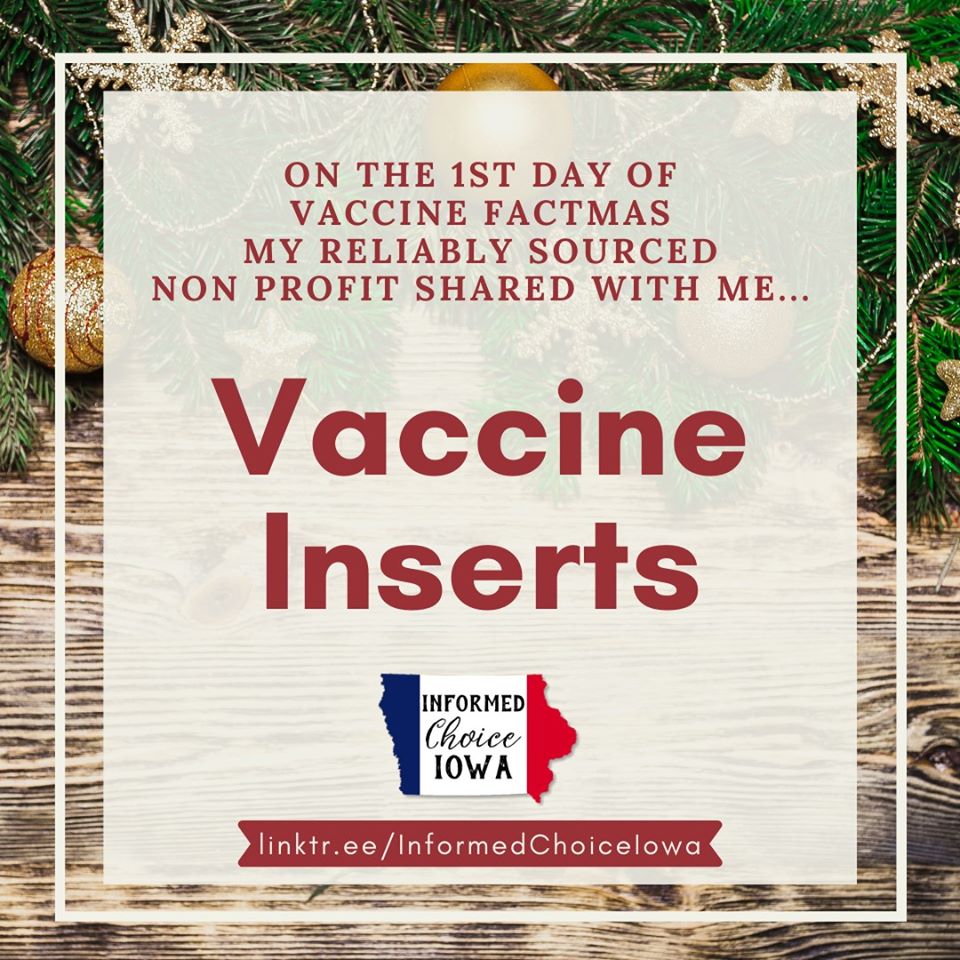The very first place we recommend starting your research.
Vaccine Package inserts are NOT the one or two page document you receive at a well child exam or physical, those are actually called Vaccine Information Statement sheets (VIS).
Vaccine inserts can be found online or in the box the vaccine comes in. You have the right to request the package insert at your medical office, but paper copies can be difficult to obtain. Fortunately, you can find all vaccine package inserts online: http://www.vaccinesafety.edu/package_inserts.htm
Unsure why you need to read an insert? As you compare the VIS and package insert, it becomes clear that many contradictions and adverse events are left off of the standard VIS, which you can access here for your own comparison: https://www.cdc.gov/vaccines/hcp/vis/current-vis.html
Not all vaccine inserts are the same. Below we break down some of the most important sections on an insert. This follows the general layout for all inserts. Please keep in mind that some inserts do not number these sections and it may be a bit harder to find this information depending on which insert you are reading.
4 Contraindications: This is where you will find known populations that may have severe reactions to the specific vaccine or may not create antibodies as well as other populations.
5 Warnings and precautions: Here you will find little ‘FYI’s’ you will not typically see on the VIS given to you by your doctor.
6 Adverse reactions: Here you will read about the adverse reactions the researchers found when they did the clinical trial. Remember, the clinical trial time periods vary by vaccine.
For example, the 2018-2019 formula of Fluzone only followed the recipients for 7 days for adverse reactions even though it’s possible for reactions to manifest much later than what the clinical trial period covered. (https://www.vaccineshoppe.com/image.cfm…)
11 Description: In this section you will find some of the ingredients (stay tuned as we take a closer look at ingredients later this week), how it was manufactured, what it looks like in the vial, etc.
13 Non clinical toxicology: The majority of vaccine inserts will say “*insert vaccine name* has not been evaluated for carcinogenic or mutagenic potential, or potential to impair fertility.” Some inserts have moved this statement making it harder to find, like the MMR-II for instance. There are no section numbers on the MMR-II insert and this statement is hidden in the ‘precautions’ section.
(https://www.merck.com/…/usa/pi_circu…/m/mmr_ii/mmr_ii_pi.pdf)
14 Clinical studies: You will find information regarding how long the vaccine was studied in this section, how long they followed the recipients, what the ‘placebo’ was, if there was one at all, or if it was merely tested against a similar vaccine. It will also list tables with information on immune response, antibody levels, etc.
Print it out, highlight it, look-up unclear words. Reading an insert can be time consuming and a little difficult, but reading an insert is a great start to fully informing yourself before giving consent to these medical procedures.
We encourage parents to fully inform themselves before making their decision regarding vaccinations.
Be informed when it comes to making medical decisions for you and your family.












